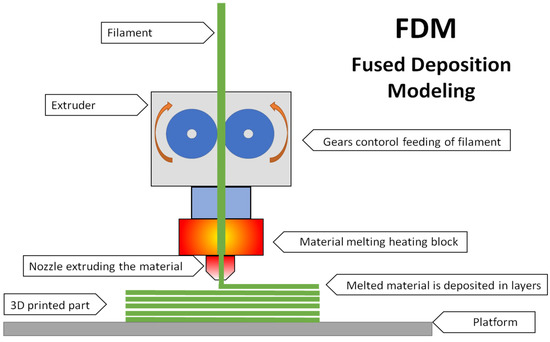Liquid for Fused Deposition Modeling Technique (L-FDM)—A Revolution in Application Chemicals to 3D Printing Technology: Color and Elements

This article presents a novel 3D printing technique called L-FDM (liquid for fused deposition modeling), which is based on the deposition of molten thermoplastic material. The new method allows for the direct introduction of chemicals and polymer filament modifications during the printing process. In contrast to traditional incremental methods, L-FDM eliminates the need for extra granulating, extrusion, and processing equipment, making it possible to introduce chemical additives to the polymer matrix directly. This opens up exciting possibilities for chemical laboratories to test and experiment with new and known chemicals through 3D printing. The article discusses the technical aspects of L-FDM and its potential applications and provides practical examples of direct filament modifications using the technique. The results of these modifications were verified using a colorimeter, electron microscopy (SEM/EDS), and optical microscopy.
1. Introduction
1.1. State-of-the-Art
1.2. Liquid for the Fused Deposition Modeling Technique (L-FDM)
Download the full study as PDF here: Liquid for Fused Deposition Modeling Technique (L-FDM)—A Revolution in Application Chemicals to 3D Printing Technology: Color and Elements
or read it here
https://doi.org/10.3390/app13137393


